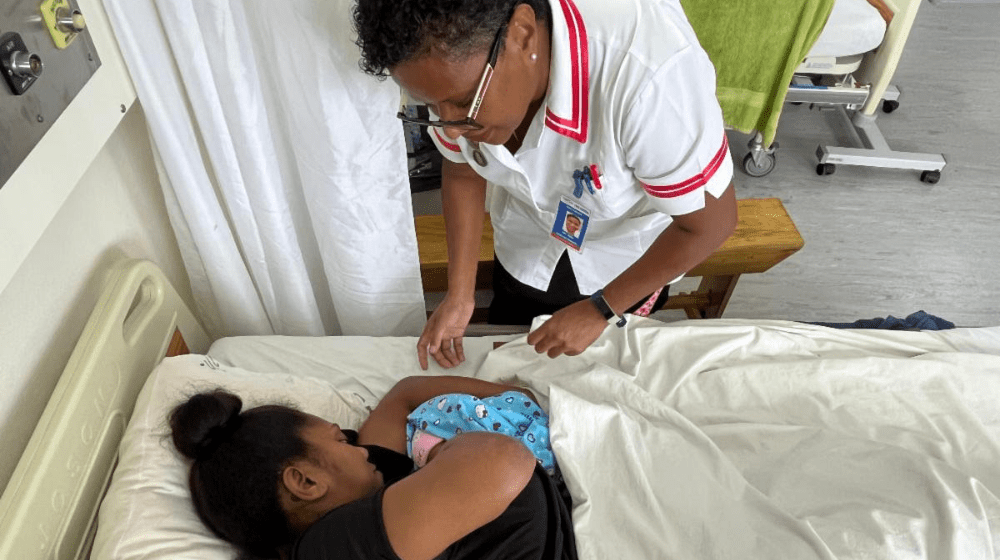Opinion Editorial on the occasion of International Day of the Midwife [5 May 2023],
by Mr. Björn Andersson, UNFPA Regional Director for Asia and the Pacific
Improving maternal and newborn health is a critical part of the Sustainable Development Goals, where we, as a global community, commit to ending preventable maternal and newborn mortality. The United Nations has consistently highlighted the crucial role midwives play in achieving these targets. Despite the need for increased investments in midwifery, the profession remains critically underfunded, with devastating consequences for mothers, children and whole societies.
Globally, the need for skilled maternal and newborn health care is immense. According to the World Health Organization (WHO), 287,000 women died during pregnancy and childbirth in 2020, with 94 per cent of these deaths occurring in low-resource settings. Every day, around 800 women die from preventable causes related to pregnancy and childbirth. This grim reality is a reminder that investing in midwifery is not merely a choice, but an urgent necessity.
Last week, I visited the Makoi Maternity Hospital on the outskirts of Suva, Fiji - the first midwifery-led maternity facility in the country. It was an honor to meet the midwives there who have dedicated their lives to ensuring every pregnancy and childbirth is safe. Midwives possess the skills and expertise to provide essential care for women during a critical period in their lives, and it is so important that investments are continued in their upskilling and training, especially in managing complications during pregnancy, and during and after childbirth.
A substantial scale up in midwifery care could avert over 40 per cent of maternal mortality by 2035. Yet, according to the State of the World's Midwifery report (2021), the world is facing a shortfall of 900,000 midwives, with the existing workforce operating under challenging conditions.
To close this critical gap, the UN and its partners have launched initiatives to strengthen the midwifery workforce. Projects like the Alliance to Improve Midwifery Education advance quality sexual and reproductive health services by prioritizing training, education and professionalization of midwives.
There is much more to be done. The global community has yet to adequately invest in the education, regulation and deployment of midwives as in many low-resource settings, midwives are often poorly trained, unsupported, and underpaid.
Beyond the immediate health outcomes for mothers and babies, a well-trained and supported midwifery workforce can strengthen health systems, and contribute to economic development. Every dollar invested in maternal and newborn health care brings a return of $9 in high-mortality countries, according to the World Bank. Midwives also help advance gender equality, as they are uniquely positioned to advocate for women's rights and bodily autonomy. The evidence is clear: investing in midwives and midwifery can save lives and transform communities.
Governments, the United Nations, NGOs, and private sector partners need to work more closely together to prioritize investments in midwifery. This means developing and implementing more midwifery education programmes in line with international standards. It also means strengthening regulatory frameworks for quality midwifery care. Getting to zero maternal and newborn deaths requires well trained, properly paid and supported midwives, along with deployment plans to remote parts of countries where women are too-often neglected and unable to access care.
Empowering midwives can create lasting positive outcomes by saving lives, creating healthier families, and fostering stronger communities. The time for collective action for midwives is now.
Björn Andersson is the Asia-Pacific Regional Director of UNFPA, the United Nations sexual and reproductive health agency.
PHOTO STORY: The world needs more midwives. This collection of portraits and profiles celebrates some of the midwives making a difference in the Asia Pacific region. READ MORE



